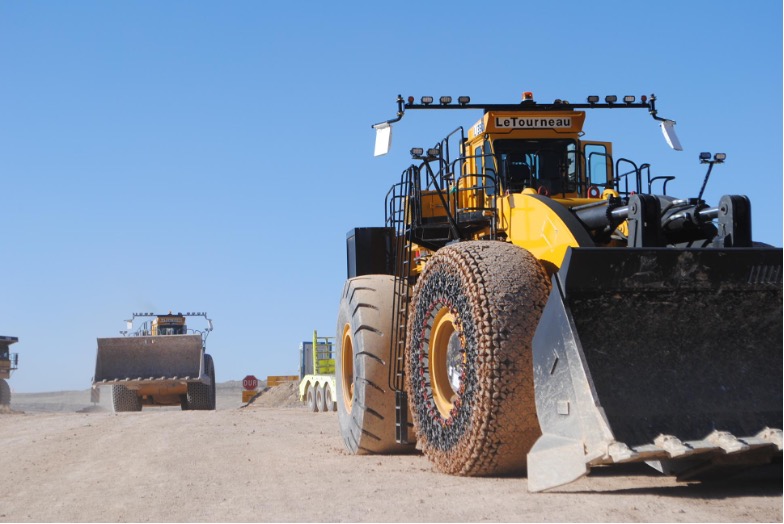Tire protection chains have been a crucial component in various industries for decades. They provide enhanced traction and durability to heavy machinery operating in challenging terrains. These unassuming chains, often overlooked by the general public, play a vital role. They ensure that construction equipment, mining vehicles, forestry machines, and agricultural tractors can operate efficiently in adverse conditions.
In recent years, the tire protection chain industry has experienced significant market expansion. It has been driven by global market expansion efforts, technological advancements, and the ever-increasing demand for improved performance and safety. This article explores the tire protection chain industry’s journey and the factors contributing to its global market expansion.
The Evolution of TPC in Market Expansion
Tire protection chains, usually known as snow chains or tire chains, have a rich history dating back to the early 1900s. Originally designed for automobiles to enhance traction on icy roads, their utility quickly extended to other vehicles facing challenging terrains.
Tire protection chains are now suitable for a range of applications due to a considerable design, material, and production technique developments throughout time.
Early Applications
Before we talk about the market expansion of the tire protection chains, let’s talk about their early applications.
First, protection chains were primarily in the transportation sector, where they were used to combat snow and ice on roads. The need for tire protection chains in off-road applications became more important in industries like agriculture, mining, and construction. Chains were modified to survive the difficult conditions seen in these sectors, resulting in the development of specific designs for varied heavy machines.
Technological Advancements
The evolution of tire protection chains has been marked by significant technological advancements. Modern chains are constructed using high-strength alloy steel, ensuring both durability and reliability in the toughest environments. The development of advanced chain patterns and innovative fastening systems has also improved performance and ease of installation.
The Global Demand for TPC in Market Expansion

The global market expansion for tire protection chains has been growing gradually, owing to a number of causes, including:
Growing Construction and Infrastructure Development
Accelerated urbanization and infrastructure development in emerging economies have led to an increased demand for construction equipment. These machines often operate in challenging environments, such as construction sites with uneven terrain and off-road access. These tools frequently work in difficult conditions, such rocky building sites with off-road access. Tire protection chains enable these vehicles to maintain traction and stability, making them indispensable in the construction industry.
Mining Industry Expansion
The mining industry is vital to the global economy and relies heavily on tire protection chains. The mining equipment operates in some of the most extreme conditions, including rocky terrains and slippery surfaces. Tire protection chains not only improve traction but also extend tire life, reducing maintenance costs for mining companies.
Agriculture and Forestry
In agriculture and forestry, protection chains play a crucial role improving the performance of tractors, combine harvesters, and forestry machines. These machines often work in muddy fields or densely wooded areas, where traction is essential for productivity.
Since the global population continues to grow, the demand for agricultural and forestry machinery is expected to rise. Also, increasing the demand for tire protection chains and making part of its market expansion.
Market Expansion Strategies
To meet the increasing global demand for tire protection chains, manufacturers have adopted various strategies to expand their presence in international markets. These strategies include:
Market Research and Analysis
Now, before entering a new market, tire protection chain manufacturers conduct comprehensive market research and analysis. This is to understand local needs, preferences, and competition.
It helps them to modify their products and marketing plans in order to satisfy certain market demands.
Distribution Partnerships
A typical strategy for market expansion is to work together with regional distributors and dealers. Since local distributors have established networks and market expertise, it is easier for manufacturers to enter new markets.
Product Customization
In order to succeed with market expansion, tire protection chain designs have been modified to fit local requirements. Different terrains, climates, and industries demand different chain designs. Ofcourse, manufacturers have to keep disposal to modify their products according to market needs.
Marketing and Promotion
In order to raise knowledge regarding tire protection chains in new markets, it is necessary effective marketing and promotion. Manufacturers spend money on marketing campaigns, trade fairs, and exhibits to promote their products and develop brand awareness.
After-Sales Support
It is critical to provide great after-sales support, including training and technical help, to ensure customer happiness and loyalty. Manufacturers who provide extensive assistance typically have a competitive advantage in foreign markets.
Technological Advancements in TPC for Market Expansion
In addition to global market expansion efforts, tire protection chain manufacturers continue to invest in research and development to enhance product performance and versatility. Some of the notable technological advancements include:
Self-Tensioning Systems
Self-tensioning tire protection chains have gained popularity in recent years. These systems automatically adjust chain tension, reducing the need for manual adjustments and maintenance. This innovation enhances safety and convenience for operators.
Lightweight Materials
The use of lightweight materials, such as advanced alloys and composites, has allowed manufacturers to create tire protection chains with better quality. They offer increased strength while reducing overall weight. This not only improves fuel efficiency but also extends tire life.
Smart Chains
The integration of technology into tire protection chains is a growing trend. Operators can make intelligent choices and avoid errors by using “smart chains” that are fitted with sensors and monitoring systems. These chains can give real-time data on chain performance, wear, and possible concerns.

As a young player of the game, Las Zırh, is always ready for change and innovation; open and flexible for the new ideas.
In conclusion, tire protection chains, originally a specialized product, have grown into a crucial component for a variety of sectors working in adverse environments. The growth of the tire protection chain business looks unstoppable as the need for construction, mining, agricultural, and forestry machinery increases on a global scale.
Key players in the industry, such as Pewag Group, RUD Group, and Las Zirh -which is the third largest manufacturers of Tire Protection Chains Market worldwide- are leading the way with their commitment to quality, innovation, and international market expansion.
To succeed in this competitive landscape, and succeed in global market expansion, tire protection chain manufacturers must continue to adapt and innovate. This includes customizing products to suit regional needs, forming strategic partnerships, investing in marketing and promotion, and embracing technological advancements.
As tire protection chains continue to evolve, they will play an increasingly vital role. Therefore, it enables heavy machinery to operate safely and efficiently around the globe, contributing to the growth of various industries and economies.


